In the modern era, when we are more connected than ever, it is more and more useful to know the time in different time-zones around the world. However, it wasn’t always this way. In this article, we will explore the popular complication introduced with GMT watches, a little about its history and how it manifests itself today across a variety of models.
The 1950s are referred to as the golden era for aviation – indeed, May 2nd 1952 marks the first flight by a commercial jet aircraft, a De Havilland Comet operated by the British Overseas Airways Corporation (a forerunner of British Airways), flying from London to Johannesburg. This aircraft was roughly the same size as the modern Boeing 737, and carried around 40 or so passengers.
Aviation in this time was very much a luxurious affair, with endless drinks on board, three-piece-suits and elegant dresses, fine cuisine and champagne, accessible only to those with significant financial clout until airlines introduced tourist class (the equivalent of economy class) in the late 1950s.
As jet-powered commercial air travel grew, so too did the previously unfamiliar phenomena, known today as jetlag. With this it became increasingly important for airline pilots, regularly flying around the world, to be able to know what the time is at both the origin and destination.

Example Pan-Am poster from the 1950s
Since 1884, time-zones of different locations around the world had been measured relative to Greenwich, London – a meridian line running vertically on the world maps, between the north and south poles. After all, a single time-zone simply would not work as everywhere would want the middle of their day to be when the sun is at its highest in the sky.
For locations east of London, such as Hong Kong, the time would be described as GMT +8 hours (i.e. midday in London is 8pm in Hong Kong), and locations west of London, such as New York, the time would be described as GMT -5 hours (i.e. midday in London is 7am in New York). Of course, this gets more complicated when you factor in daylight savings, however it explains the concept!
With the wristwatch having become an increasingly important tool over the Twentieth Century, a new requirement was placed upon it by modern day commercial airline travel – the need to display the time in multiple time-zones concurrently.
What are GMT Watches?
The first wristwatch capable of displaying an additional timezone was created by Glycine in the form of the Airman in 1953. This implementation was slightly different to what we commonly see today, in that it tracked time to a 24-hour scale on the dial which ran from 1 – 24 as opposed to 1 – 12. An additional 24-hour scale was added to a rotating bezel, which could then be set so the hours and minute hands would point to 2 times simultaneously.
This was soon followed in 1954 by Rolex’s GMT-Master, a product born of a collaboration with Pan American Airways to help their pilots keep track of multiple time-zones on long haul flights. The first reference of this (ref. 6542) contained a movement which had an additional GMT, or home time hand that rotated once about the dial every 24 hours. However, this additional hand could not be set to a specific time itself and was tied to showing the same time as the regular hour hand, with the user instead needing to rotate the bezel (which also introduced red and blue colours to denote day and night) to set the additional time-zone.
This is how the complication remained until 1983, with the introduction of the GMT-Master II (ref. 16760) which enabled the home time hand to be independently set relative to local time (hours and minutes hands). Given without being able to move the hand it was possible to display two time-zones, the introduction of being able to now move the home time hand independently from local time now made it possible to display three time-zones on a single timepiece. This can be achieved as follows:
– local time by using the hours and minute hands;
– home time against the 24-hour bezel in ‘default’ position, where 24 is at the 12 o’clock position (for example, a home time hand at the 6 o’clock position would indicate 1200, or midday, on the 24-hour bezel); and
– home time against the 24-hour bezel when rotated to another position (for example, a home time hand at the 6 o’clock position would indicate 1800 if the 24 on the 24-hour bezel was rotated to the 9 o’clock position)
Today, the GMT-Master II collection has introduced many popular references amongst collectors, with affectionate nicknames given to them!
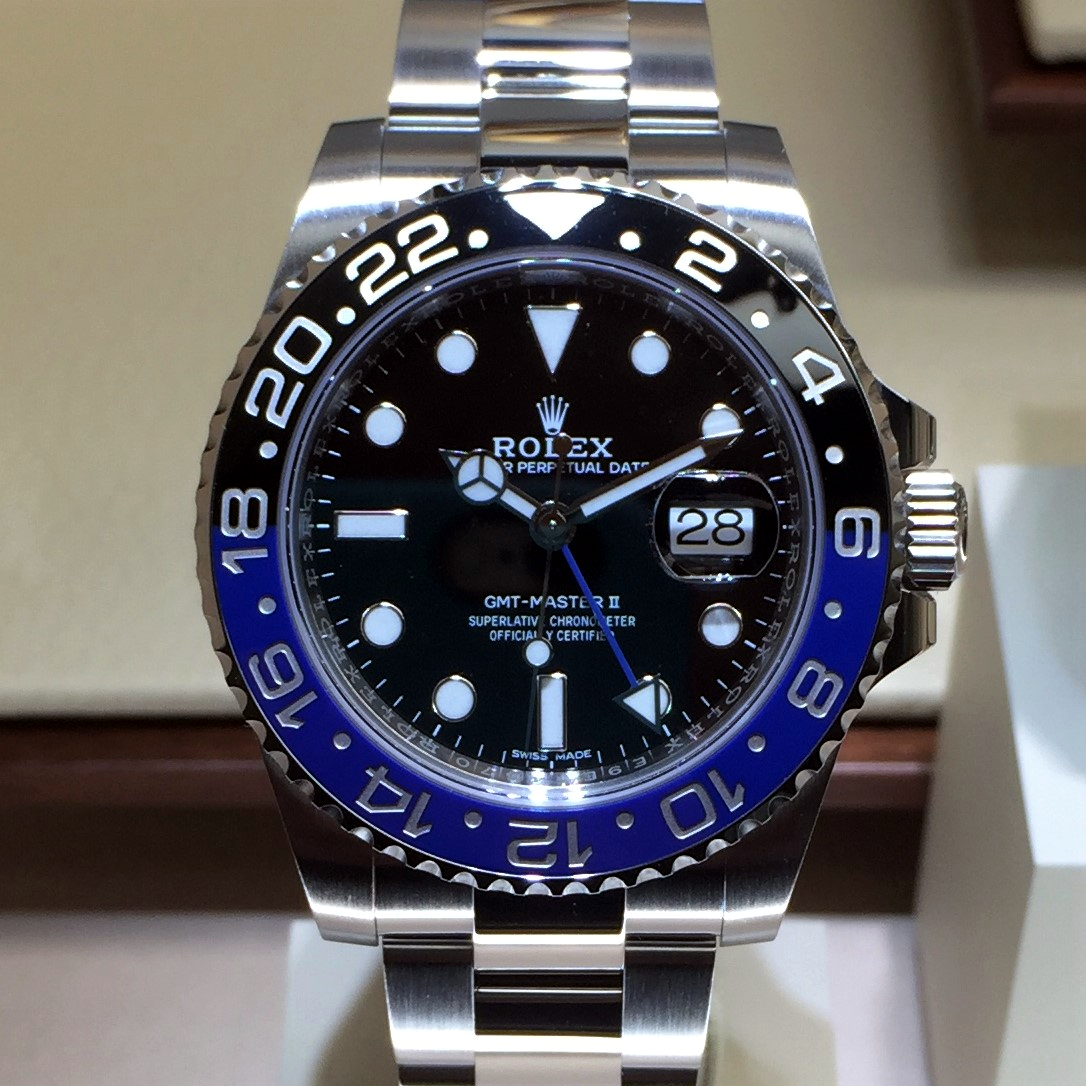
Rolex GMT-Master II 116710BLNR-0002 – aka “Batman”
As time has evolved, the mechanism for displaying and managing additional time-zones has evolved a lot. Additional time-zones now feature on a plethora of timepieces, and not just travel or pilot’s watches, but sports and tool watches too – there are even dive watches including this complication.
Indications can be adjusted independently of one another without effecting other hands (such as hour hands jumping in one hour increments, both forwards or backwards), day/night indications of different time-zones in place of a 24-hour bezel, and the ever popular worldtime displays, which show multiple time-zones by city on a dial as opposed to a 24-hour scaled bezel.
Examples of these different display languages are vast, however below you can see the Patek Philippe Calatrava Pilot Travel Time with local and home day/night indications to compliment the skeletal-design GMT hand on its 12 hour scale, Jaeger-LeCoultre’s Geophysic which depicts the world map focused on the North Pole to acknowledge the expeditions of the USS Nautilus, and Laurent Ferrier’s Classic Traveller with an enamel dial of the world map and additional time-zone indication displayed via an aperture at the 9 o’clock position:
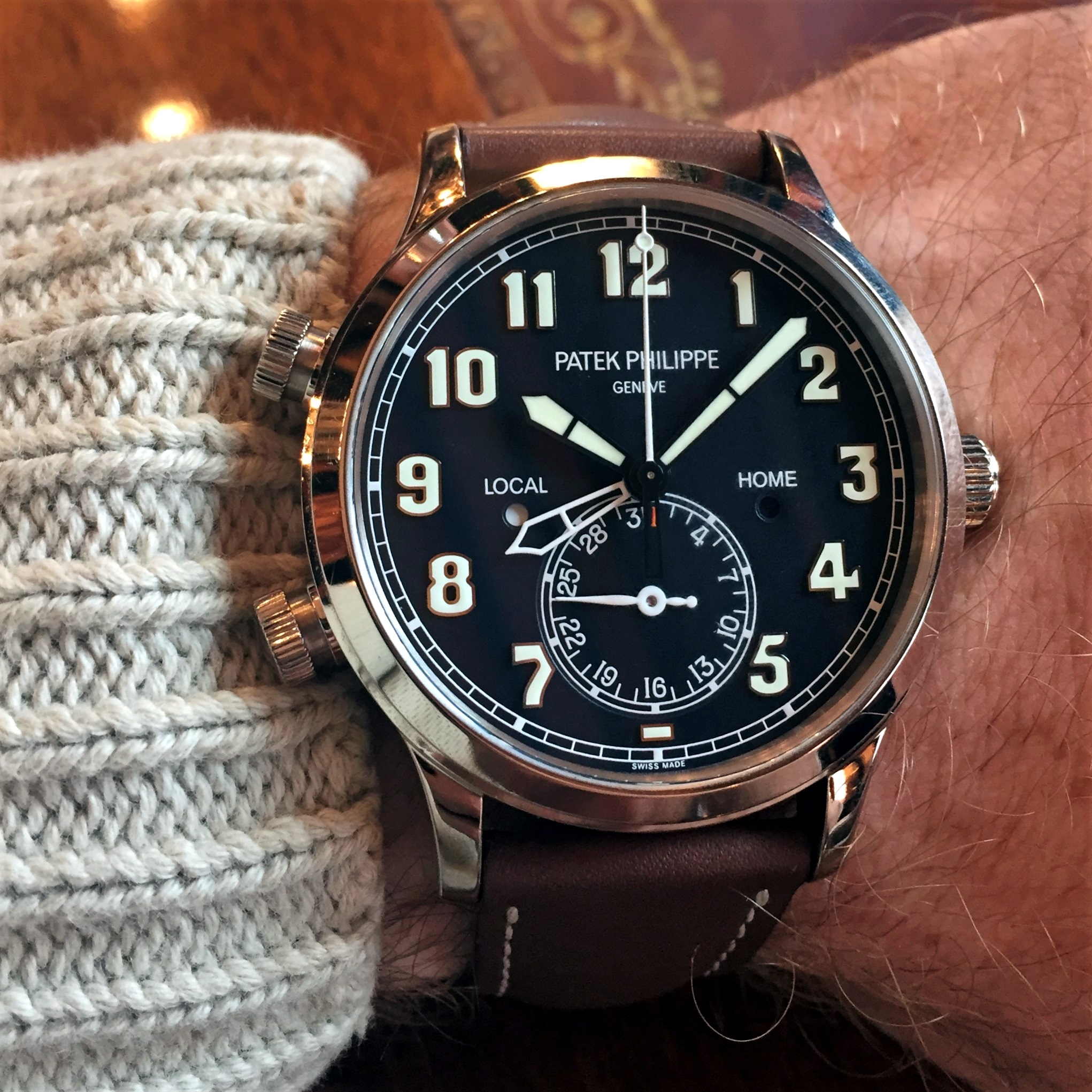
Patek Philippe Calatrava Pilot Travel Time
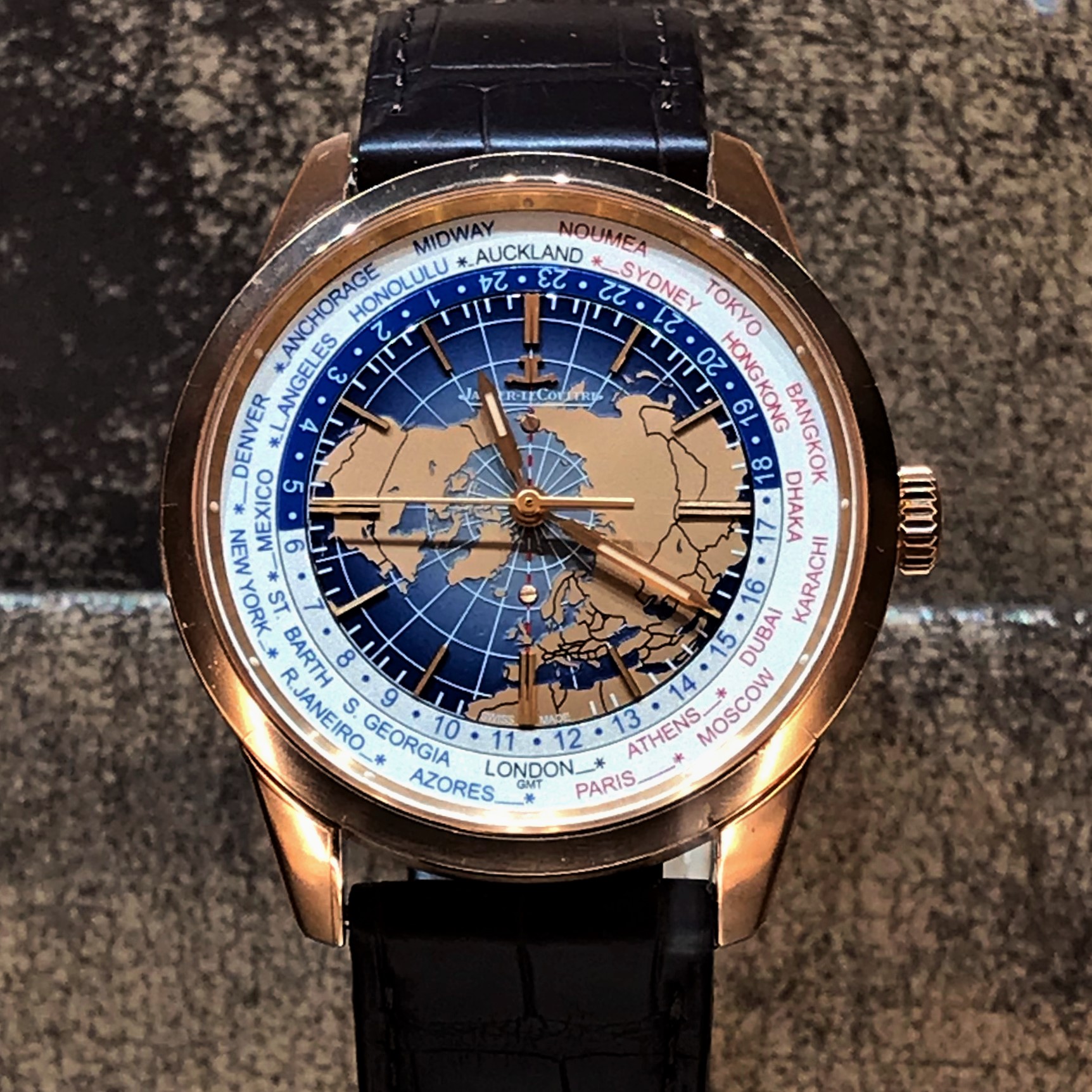
Jaeger-LeCoultre Geophysic
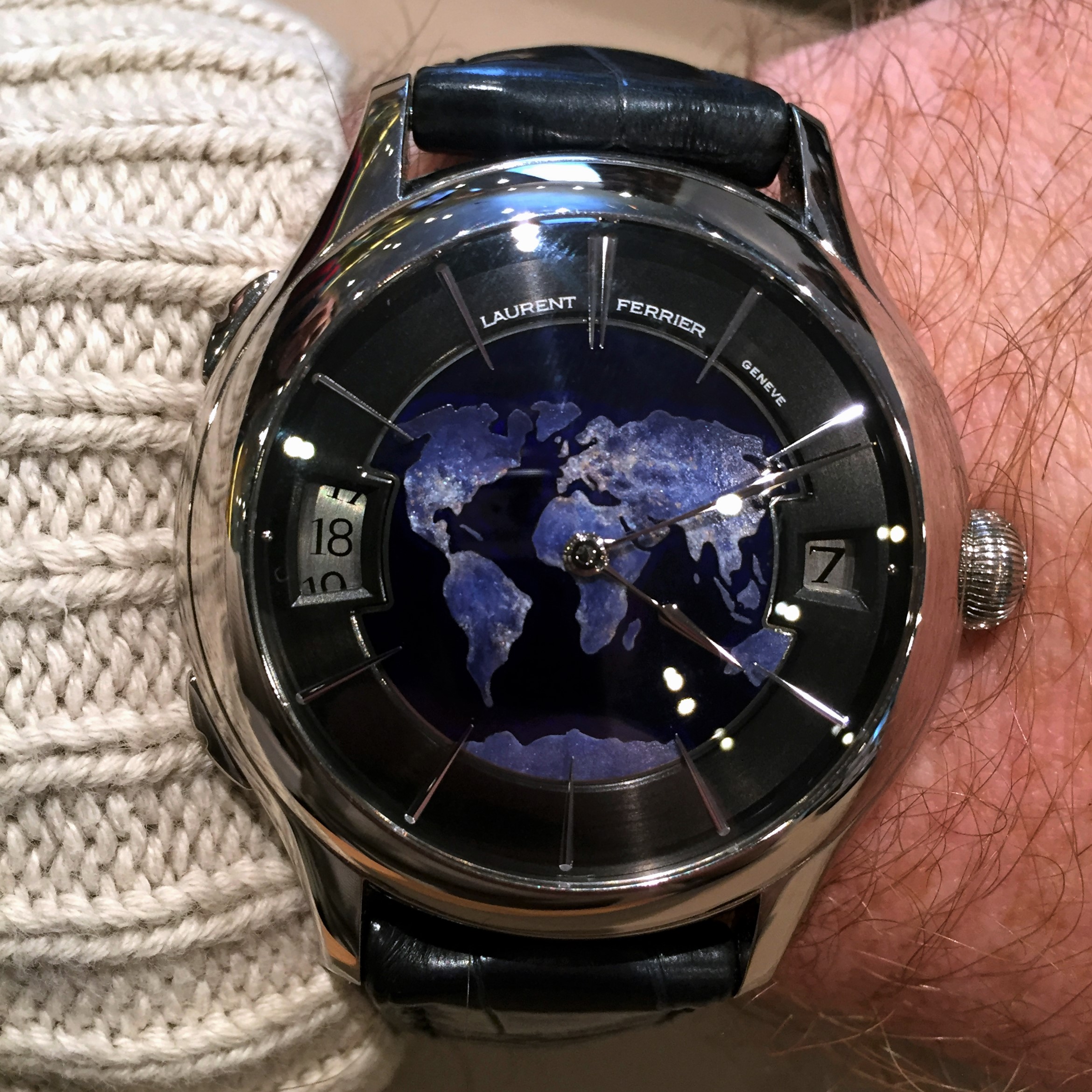
Laurent Ferrier Classic Traveller
GMT watches introduced the facility to display multiple time-zones on a timepiece, is one which has always proved itself to be exceptionally useful. In today’s world where we communicate with colleagues, friends and family all around the world in some cases on a daily basis, the ability to know at a glance what time it is in these far-spread places is always going to prove useful.
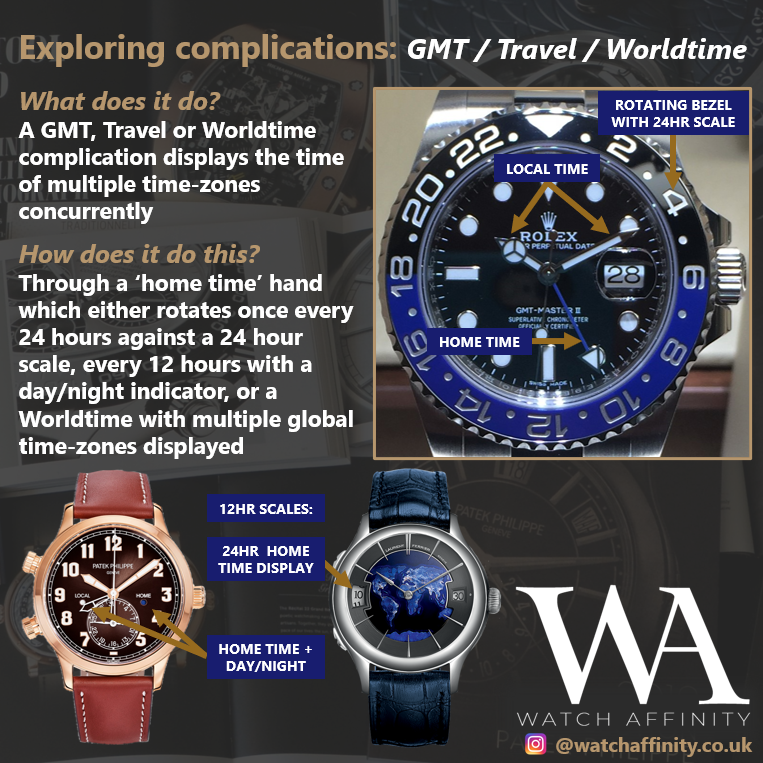
We really hope that you have found this informative and helpful – please get in touch and let us know what you think via our Contact page, or via our Instagram.
You might also be interested in:
- Spotlight: Grand Seiko SBGM221
- Spotlight: Laventure Transatlantique GMT
- My Spotlight: Navitimer Cosmonaute vs Navitimer B01
- Watch Stationery and Gift Ideas
- Watch Books, Watch Boxes and more at the Watch Affinity Shop on Amazon (commissions earned)
As an Amazon Associate, I earn from qualifying purchases – thank you for your support

